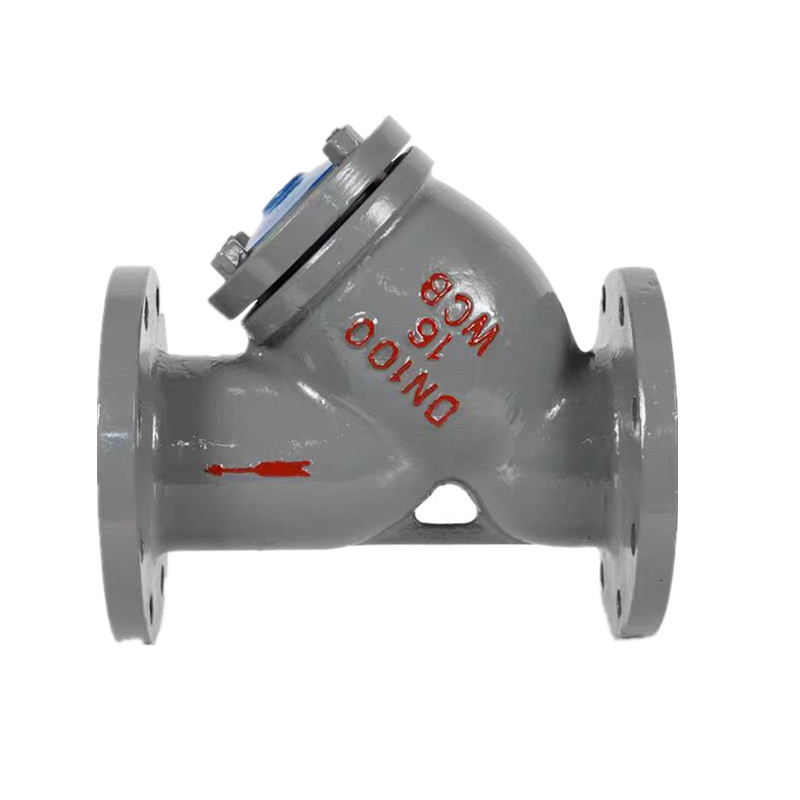How Can Industrial Fluid Strainer Solutions Address Your Process Challenges?
2025-10-23
Hello—after 20 years in the industry and now working within the team at JOEPAI, I’d like to share how our advanced strainer valve solutions—specifically our Strainer Valve products—are designed to tackle key pain points in fluid handling systems.
What Problems Do Industrial Fluid Strainers Solve?
In many of the projects I’ve encountered, upstream systems (pumps, valves, heat exchangers, pipelines) face disruptions because of debris, solids or particulate contamination in the fluid. Interrupted flow, increased maintenance, unexpected downtime, high repair costs—all result.
That’s where a robust industrial fluid strainer solution comes in: by deploying the right strainer valve and basket or mesh element you can:
-
Protect downstream equipment from damage or wear
-
Maintain consistent flow and reduce differential-pressure drops
-
Lower maintenance intervals and associated costs
-
Enable greater operational reliability and uptime
According to industry sources, strainers are critical for removing particulates from liquids and safeguarding downstream equipment in manufacturing, water-treatment, chemical, and oil & gas systems.
What Types of Strainer Valve Solutions Are Available?
At JOEPAI we cover a full range of configurations so you can choose the right one for your application. Here is a breakdown of common types:
| Type | Description | Typical Application |
|---|---|---|
| Simplex (Basket) Strainer | Single housing, one basket. Fluid flows through mesh; cleaning requires shutdown. | Standard water or oil systems where short shutdowns are acceptable |
| Duplex (Twin-Basket) Strainer | Two parallel baskets with diverter valve so one basket stays online while the other is cleaned. | Critical lines requiring uninterrupted flow (power plants, refineries) |
| Self-Cleaning (Automatic) Strainer | Automatic cleaning mechanism (backwash/flush) without stopping flow. | High-demand continuous systems: seawater, cooling, process fluids |
What Are the Key Product Parameters to Specify?
When we design the strainer valve for you, we focus on the following parameters to ensure optimal selection and sizing:
Key Parameters:
-
Connection size (e.g., ½″–36″ or larger)
-
Pressure rating (PSIG/bar)
-
Material of construction (e.g., stainless steel 304/316, cast iron, alloy)
-
Mesh/ perforation size (e.g., from 40 mesh up to 200 mesh or custom)
-
Flow rate / fluid velocity / pressure drop
-
Cleaning method (manual basket removal, diverter valve, auto backwash)
-
Service fluid (water, oil, chemicals, seawater) and the associated corrosion/erosion factors
-
Maintenance access, basket size, replacement interval
Here is a sample specification table for a typical JOEPAI Strainer Valve model:
| Parameter | Value | Notes |
|---|---|---|
| Nominal Size | 6″ | Standard pipeline size |
| Pressure Rating | 150 PSIG | Suitable for many industrial systems |
| Material | 316 Stainless Steel | Good corrosion resistance |
| Mesh Size | 100 mesh (approx. 149 µm) | Captures moderate-sized particulates |
| Connection Type | Raised Face Flange | Common industrial flange standard |
| Cleaning Mode | Manual Basket Removal | Scheduled maintenance |
| Typical Application | Cooling Water Supply | Protecting heat exchanger feed |
Why Should You Choose Our JOEPAI Strainer Valve Solution?
Speaking as someone who has commissioned, repaired and optimized many fluid systems over the past two decades, I can tell you what matters: reliability, serviceability and total lifecycle cost. Here’s how our solution stands out:
-
We engineer with real-world feedback—less frequent shutdowns, easier basket access.
-
We offer customization: mesh sizes, materials, connection types—all tuned to your application.
-
We emphasise minimal pressure drop and efficient flow designs (important for pumps/valves).
-
We provide technical support and documentation to help your team maintain the system.
-
We help you specify the right cleaning strategy (manual vs automatic) to align with your maintenance budget and uptime needs.
How Do You Select the Right Strainer Valve for Your System?
Here’s my checklist I share with clients:
-
Define your fluid and contamination profile: What is flowing (water, oil, chemical)? What size/volume of debris are you expecting?
-
Flow and pressure conditions: What is the maximum flow rate and what pressure drop can your system tolerate?
-
Service environment: Corrosive, high-temperature, variable viscosity?
-
Maintenance / downtime constraints: Can you afford to shut down to clean? If not, go duplex or self-cleaning.
-
Space and footprint: Do you have enough pipeline length and space for the strainer housing and maintenance access?
-
Lifecycle cost analysis: Factor in basket replacements, labour, downtime—not just purchase price.
Following this method ensures you don’t oversize, undersize, or pick a wrong cleaning mode—which are the most common mistakes.
What Mistakes Do We See and How Can You Avoid Them?
From my 20 years in operations, I’ve seen certain recurring issues:
-
Choosing a strainer with mesh too coarse—leaving downstream equipment vulnerable.
-
Skipping the pressure drop calculation—resulting in pump inefficiency or cavitation.
-
Picking manual basket strainers in systems that really require continuous flow—leading to unplanned downtime.
-
Ignoring material compatibility—especially in aggressive fluids or seawater service.
-
Poor maintenance planning—baskets clog and then system performance drops or the strainer fails catastrophically.
By aligning the correct strainer valve specification with your operational reality, you avoid these pitfalls.
Why Does This Matter for SEO and for You?
As part of our online content strategy we ensure that keywords like Strainer Valve, industrial fluid strainer, basket strainer, duplex strainer, automatic self-cleaning strainer appear naturally in the blog, because that reflects what engineers and procurement professionals search for when looking for solutions. This approach helps your site show up in search results, enabling you to find the right equipment and partner faster. Furthermore, our approach explains the “why” and “how” (not just specs), which aligns with Google’s push for helpful, user-oriented content.
Ready to Optimise Your Fluid System with the Right Strainer Valve?
If you’re facing issues with debris, downtime, equipment wear or pressure drop in your fluid system, let’s talk. At JOEPAI we are ready to help you select, install and support the right industrial fluid strainer solution. Contact us now to request a quote, specification sheet or to discuss your system requirements. I look forward to working with you and improving your system reliability.



